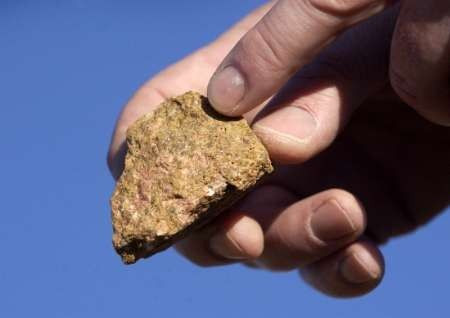Is there a way to fight China’s rare earths ‘economic warfare’?

China's rare earth exports declined by 77 percent in October, government data revealed on Tuesday, confirming Beijing's ability to choke the global high-tech industry of precious rare earth elements (REE).
China's General Administration of Customs revealed 830 metric tons of rare earths were exported last month compared to 3,660 tons in September. That should ring alarm bells in countries like Japan and the United States, which are highly dependent on Chinese rare earths shipments.
China produces as much as 97 percent of rare earth elements globally. While it’s not uncommon for a country to hold production monopoly over a minor commodity, equations are complex with Beijing holding near-total sway over the rare earths market.
A single mine in the United States supplies 86 percent of world demand for beryllium and two mines in Brazil account for 92 percent of world niobium production, a US Geological Survey (USGS) report has shown. However, the game changes when it's China that's controlling the entire market for REE.
It was reported on September 21 that Chinese customs officials had abruptly stopped the processing of documents for Japan-bound rare earth shipments. The Chinese decision followed the breakout of a fresh row between the two countries over the disputed islands in the South China Sea. China twisted the balance of an ongoing fist fight over the Senkaku islands which both countries claim as their own, by mixing business with politics in a crude fashion.
ECONOMIC WARFARE
Japan termed this an ‘economic warfare’ by its old adversary, but quickly ceded ground by releasing the detained captain of a Chinese boat which slammed into Japanese patrol vessels, triggering the diplomatic standoff.
China repeated the brinkmanship yet again a month later, this time the U.S. stance on China's violation of free trade rules coming in the crosshairs. China reportedly halted some shipments of the rare earths to the U.S and Europe between October 18 and 28. This was seen as a retaliatory action by the Chinese as the U.S. government started an inquiry into Beijing’s possible violation of international free trade rules with its green energy policies.
Chinese clampdown on the rare earths prompted major importers Japan and South Korea to look for alternative sources of the precious elements which is heavily used by their high-tech industries.
While South Korea planned to team up with Japan and the United States to jointly develop alternative rare earths resources, Japan sought to beef up procurement from countries like Vietnam and India.
Australia closed ranks with Japan on Tuesday on the rare earth crisis, saying Canberra is willing to be a long-term supplier of rare earths metals to it. “Australia stands ready to be a long-term, secure, reliable supplier of rare earths to the Japanese economy, Foreign Minister Kevin Rudd said.
Technically viable alternatives to rare earth materials are not known currently, and countries dependent on rare earths have no option but to put in place long-term plans to build alternative resources.
ARE THEY INDEED RARE?
Rare earth elements are not exactly rareified minerals, but the rest of the world apparently played into China's hands by going easy on their exploration and production as environmental priorities complicated a game they were already losing to China on the labor cost front.
And the Chinese were not in the driving seat until late into the 1990s. Prior to 1998, when production from the Mountain Pass mine in California was curtailed, the United States produced most of the light REE consumed domestically and by free market countries, says the USGS report.
The Mountain Pass mine in California was shot down in 2002. Now, apart from European countries and Japan the United States imports all of its rare earth elements raw materials from foreign sources, principally China.
However, China, which produces 97 percent of global supplies, doesn’t boast of a monopoly in reserves. Its production monopoly interestingly comes out of 36 percent control of global reserves. The rest of the reserves are spread around the globe, including in the U.S., but studies have shown that it's a herculean task to catch up with China in the short-to medium-term.
US RESERVES
The U.S. rare earth domestic reserves and inferred resources are approximately 1.5 million tons, which are large compared with peak domestic consumption of REE of 10,200 tons in 2007. The pipeline of new REE projects within the United States is rather thin, the report points out.
During the past 50 years outside of China, there has been little REE exploration and almost no mine development; hence, we have no real REE exploration and development record to draw upon for assessing the future pace of discovery and development, says the USGS report titled 'The Principal Rare Earth Elements Deposits of the United States—A Summary of Domestic Deposits and a Global Perspective.'
Currently there are around 150 projects worldwide prospecting and exploring for rare earth elements, but these activities, which began in the last 2 years, will take a long time to bear results.
The study says developing a new mine requires a prolonged effort of prospecting, exploration, process development, feasibility studies, permitting, construction, and commissioning. These efforts are broadly sequential but commonly overlap. The time required to complete all steps is variable but appreciable, particularly compared with the time typically required by nonextractive industries.
It explain that while most modern mines are developed under a comprehensive regulatory environment processes like environmental studies, due diligence studies by financing sources, permitting, public participation, and due process require substantial amounts of time in the U.S.
... it is no exaggeration to say that China dominates the world REE industry. This dominance is attributable to China’s large, high-quality resources of REE coupled with minimal capital investment, low labor costs, and lack of environmental regulation,” says the report.
Will the tightening of Chinese rare earths export policy stimulate changes in the world's rare earths industry and initiate new investment in new projects globally?
© Copyright IBTimes 2024. All rights reserved.




















